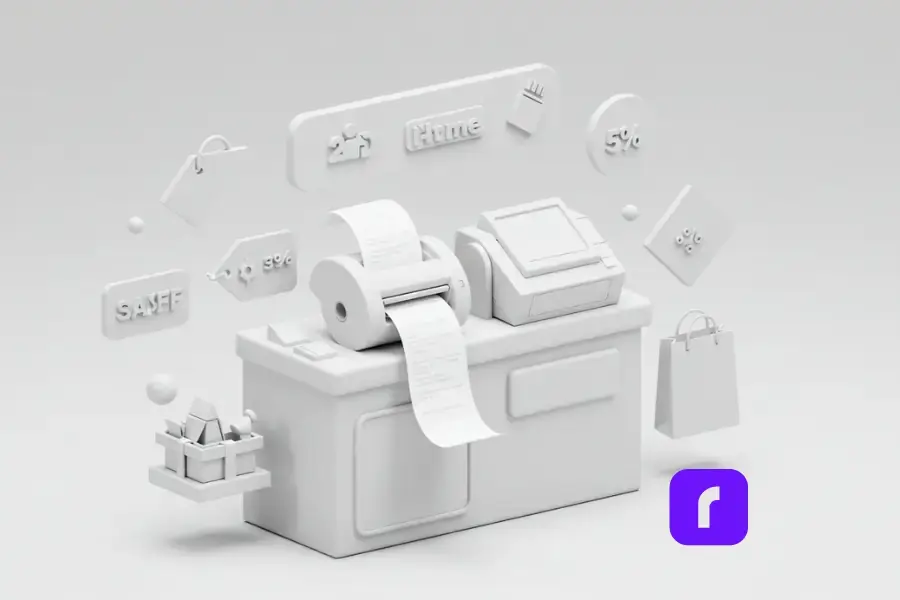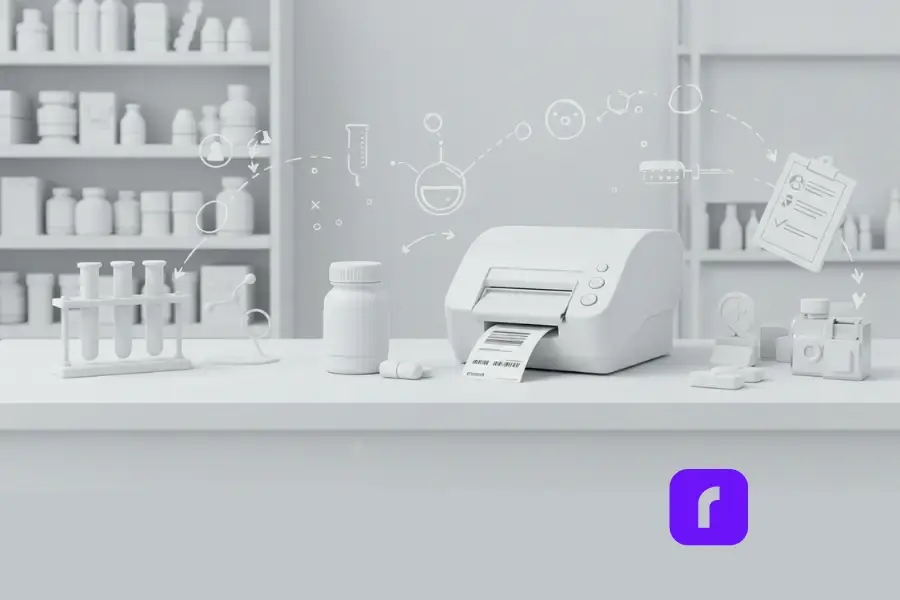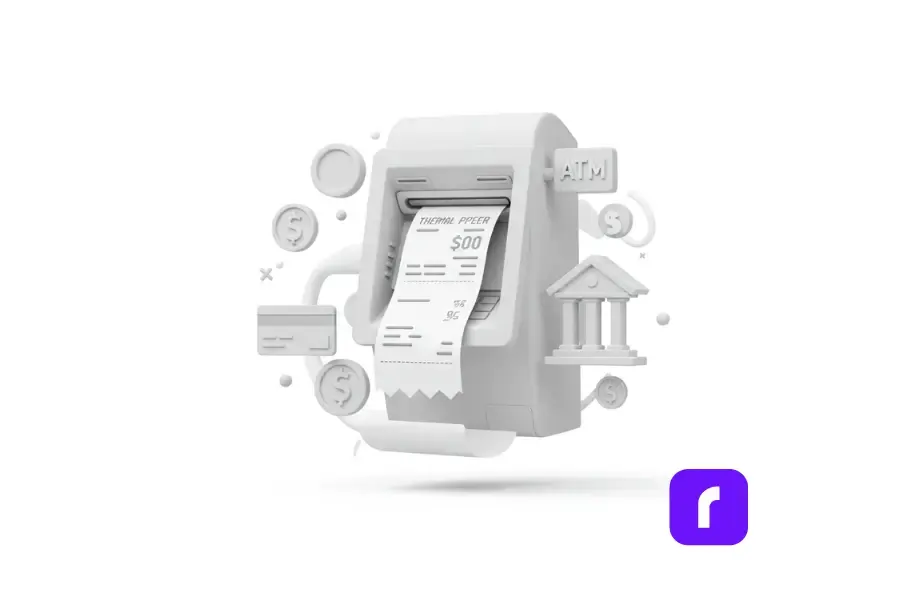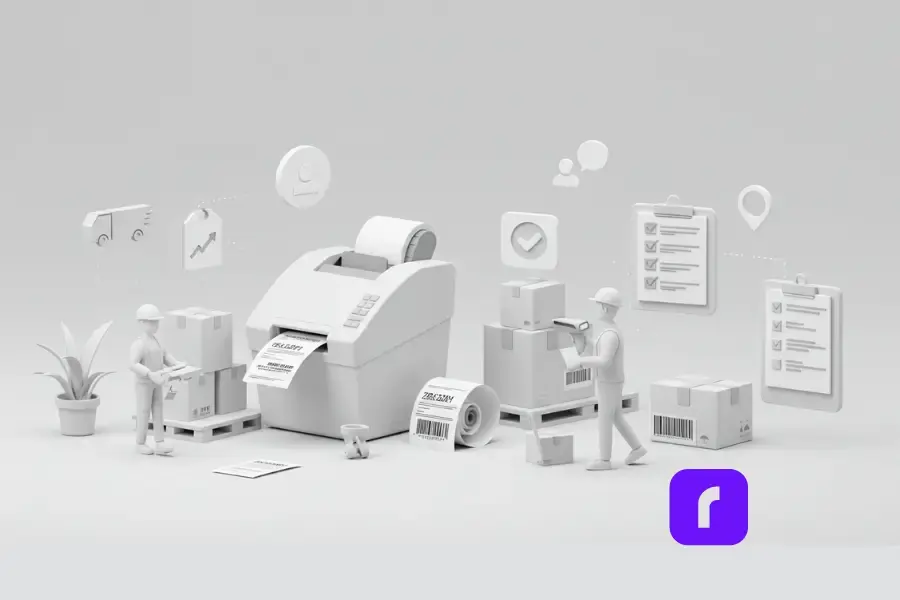Have you ever wondered how shipping labels, receipts, and tickets magically appear with crisp, clear text—without a single drop of ink? The answer lies in thermal printer paper, a smart, eco-friendly solution that’s made life easier for businesses around the world. Whether you’re managing a busy online shop or running a small café, understanding thermal printer paper can help you save time, cut costs, and keep your operations running smoothly.
In this guide, we’ll dive into 10 essential facts about thermal printer paper—what it is, how it works, and why it’s a must-have for small to medium-sized businesses. Let’s get started!
Navigation Guide
1. What Is Thermal Printer Paper?

At its core, thermal printer paper is a special type of paper coated with heat-sensitive chemicals. Instead of using ink or toner, thermal printers rely on heat to create images and text. When the printer’s thermal head applies heat to the paper, the coating reacts and changes color. The result? Sharp, high-quality prints without the mess or hassle of cartridges.
This inkless process makes thermal printing incredibly efficient for businesses that need fast, reliable results—like shipping labels or customer receipts. Plus, it keeps things simple. Fewer moving parts mean fewer headaches.
2. The Science Behind the Magic
Thermal paper isn’t your average sheet of paper—it’s a carefully layered product. Here’s a quick breakdown of its’ chemical composition and layers:
- 🌳 Base Paper: Made from wood pulp, this forms the foundation.
- ⚙️ Precoat Layer: Stabilizes the paper and ensures even heat distribution.
- 🔥 Thermal Coating: The star of the show, containing leuco dyes and developers that react to heat.
- 🛡️ Optional Topcoat: Adds durability, protecting against oil, water, and scratches.
- 🌀 Anti-Static Coating: Reduces curling and ensures smooth feeding through the printer.
These layers work together to produce reliable, smudge-free prints, even in demanding environments.
3. A Brief History of Thermal Paper

Thermal printing might feel modern, but its roots go back to the 1960s. Texas Instruments created the first thermal printer, sparking a revolution in printing technology. By the 1980s and 1990s, thermal paper became more durable and widely used across industries, from retail to healthcare.
Today, thermal paper is the gold standard for businesses that need fast, high-quality printing solutions.
4. How to Identify Thermal Paper
Ever picked up a shiny, slippery receipt and thought it felt… different? That’s thermal paper! Here’s how to recognize it:
- 🖐️ Scratch Test: Run a fingernail across the surface. If it leaves a black mark, it’s thermal paper.
- ✨ Texture: It’s smooth, shiny, and a little slippery compared to regular paper.
- 🌟 Appearance: The coating gives it a slightly glossy finish.
These quick tests can save you from accidentally buying the wrong type of paper for your printer.
5. Why Businesses Love Thermal Printer Paper

Thermal printer paper isn’t just convenient—it’s packed with benefits that make it a favorite among small and medium-sized businesses:
- ⚡ Speed: Thermal printers are lightning-fast, perfect for busy shipping schedules.
- 🔧 Reliability: With fewer moving parts, they’re less prone to jams or breakdowns.
- 💰 Cost-Effective: No ink cartridges mean lower costs and less clutter.
- 🖼️ High-Quality Prints: Crisp, smudge-free results every time.
Whether you’re printing shipping labels or receipts, thermal paper ensures you get the job done quickly and efficiently.
6. Eco-Friendly and BPA-Free Options
If you’re an environmentally conscious business owner, you’ll appreciate that thermal paper eliminates the need for ink and toner, reducing waste. Many thermal papers are also BPA-free, which is better for both human health and the environment.
Rollo’s thermal labels take it a step further—they’re FSC-certified, which means they come from responsibly managed forests. So, you can feel good about every label you print.
7. The Role of BPA in Thermal Paper
Speaking of BPA, it’s worth noting that some thermal papers still use this chemical to enable inkless printing. However, BPA has been linked to health concerns, which is why BPA-free thermal paper has become the preferred choice for many businesses.
Rollo’s BPA-free labels offer a safer alternative without sacrificing quality. They’re proof that you don’t have to compromise sustainability for performance.
8. Versatile Applications Across Industries
Thermal printer paper isn’t just for shipping labels. It’s used in a variety of industries:
- 🛍️ Retail: Receipts, price tags, and promotional labels.
- 🏥 Healthcare: Prescription labels and medical test results.
- 🏦 Banking: ATM receipts and transaction slips.
- 📦 Logistics: Shipping labels and inventory management tags.
Wherever quick, clear printing is needed, thermal paper gets the job done.

Thermal printer paper powers retail transactions by printing crisp, detailed receipts that customers can easily read. It’s also essential for creating durable price tags and eye-catching promotional labels that stand up to handling in busy retail environments, ensuring smooth and efficient operations at the checkout counter.
In healthcare, thermal paper ensures the precision and clarity required for prescription labels and medical test results. Whether it’s a pharmacy printing a label for accurate dosage instructions or a lab providing detailed test documentation, thermal printers deliver reliable output critical for patient care and safety.


Thermal paper is indispensable in banking, producing ATM receipts with sharp text and clear transaction details. Whether you’re withdrawing cash or checking account activity, these receipts provide customers with accurate records of their financial transactions, maintaining trust and transparency in banking services.
In logistics, thermal printers simplify the process of creating durable shipping labels and inventory management tags. These labels withstand the rigors of transportation, ensuring packages are accurately tracked and delivered while keeping warehouse operations efficient and organized.

9. Durability and Storage Tips
Thermal prints are long-lasting—when stored correctly. Here’s how to keep them in top shape:
- 🌡️ Room Temperature: Store in a cool, dry place to prevent fading.
- ☀️ Avoid Sunlight: Direct light can degrade the chemical coating.
- 🛡️ Topcoat Protection: Papers with a topcoat resist oil, water, and scratches.
With proper storage, thermal prints can last anywhere from 7 to 15 years, making them ideal for archiving shipping or transaction records.
10. Size and Variety to Fit Every Need
Thermal paper comes in a range of sizes and types to suit different business needs. Common roll sizes include:
- 🧾 3 ⅛” Rolls: Perfect for standard POS systems.
- 🖨️ 2 ¼” Rolls: Popular for smaller receipt printers.
Rollo’s thermal labels are available in a variety of sizes, ensuring compatibility with their wireless printers and making them a versatile choice for businesses of all sizes.
Why Choose Rollo’s Thermal Labels?

Rollo offers more than just high-quality thermal labels—they provide a complete solution for SMBs. Their BPA-free, FSC-certified labels are designed with durability and sustainability in mind. Paired with Rollo’s wireless label printer, shipping app, and Label Design App, they help you save time, reduce costs, and keep your business running smoothly.
The Label Design App makes creating custom labels simple, offering advanced features like pre-existing templates, custom dimensions, and barcode integration. Whether you’re managing inventory, shipping orders, or creating promotional tags, this app allows you to design professional labels that align with your branding.
Thermal printer paper isn’t just paper—it’s a tool that can simplify your business operations, save you money, and reduce your environmental footprint.
Final Words
Thermal printer paper isn’t just a convenient tool—it’s a game-changer for small and medium-sized businesses looking to streamline operations, save costs, and embrace eco-friendly practices. From its ingenious heat-reactive coating to its versatility across industries, thermal paper proves itself as the quiet hero behind countless receipts, shipping labels, and promotional materials.
Whether it’s the durability of its topcoat protection, the efficiency of its inkless printing process, or the range of BPA-free options available, thermal paper meets the demands of modern businesses while keeping things simple. Paired with thoughtful storage and proper handling, it delivers crisp, reliable results every time.
If you’re ready to take your business’s printing game to the next level, Rollo’s thermal labels are the perfect choice. BPA-free, FSC-certified, and compatible with Rollo’s wireless printers, they’re designed with your needs—and the planet—in mind. Because let’s face it: you’ve got enough on your plate without worrying about printer jams or faded labels.
Follow Rollo on:
Frequently Asked Questions Thermal Printer Paper
📌 Q: How does thermal printer paper work?
💭 A: Thermal paper uses a heat-sensitive coating that reacts to the printer’s thermal head, creating clear images without ink or toner.
📌 Q: Why is BPA-free thermal paper better?
💭 A: BPA-free paper is safer for human health and reduces environmental impact, making it a better choice for businesses.
📌 Q: How do I store thermal printer paper?
💭 A: Store it in a cool, dry place, away from sunlight and humidity, to prevent fading or curling.
📌 Q: Can thermal printer paper be recycled?
💭 A: Yes, many thermal papers, including Rollo’s FSC-certified options, are recyclable.
📌 Q: What industries benefit most from thermal paper?
💭 A: Thermal paper is widely used in retail, healthcare, banking, and logistics for its speed and reliability.


